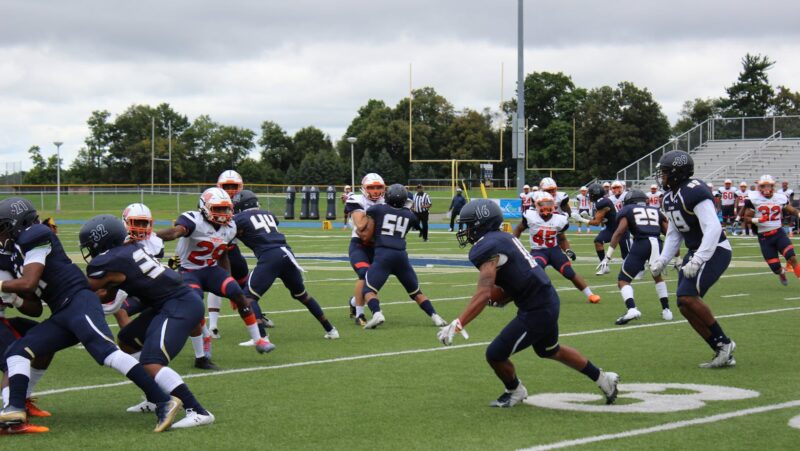
Apple recently stirred up controversy when it chose to display the Crimean peninsula as Russian territory in several products, including Apple Maps and Weather. The move has been criticized by some, who view it as an attempt to legitimize Russia’s 2014 annexation of the region from Ukraine. However, the Cupertino tech giant has defended its decision and denied any political motivations behind it.
The dispute over Crimea began in February 2014 when Russian troops moved in to occupy the region, which was then part of Ukraine. Following a referendum which many international bodies and countries condemned as illegal, Russia annexed Crimea two months later. Despite international condemnation, Moscow views Crimea as part of its sovereign territory and considers it an integral part of Russia.
This decision is particularly noteworthy given Apple’s reputation for neutrality and the political sensitivities involved with decisions over territorial disputes like this one. While Apple has not elaborated further on its reasoning, there are questions about why the company chose to change its maps now–when tensions between East and West have only grown following allegations of Russian interference in the 2016 US presidential election.
Apple alters Maps and Weather to show Crimea as a Russian territory
The long-time dispute over the status of Crimea has recently become front page news again after Apple revised its mapping and weather app to show Crimea as a part of the Russian Federation. This sparked international criticism, as the move goes against the United Nations Security Council resolution, which does not recognize Crimea as a part of Russia.
In this article, we’ll look into the background of the dispute and the implications of Apple’s decision to alter maps and weather to show Crimea as a part of the Russian Federation.

History of Crimea
The history of Crimea goes back many centuries. Archaeological evidence shows that the region was inhabited from around 11th–12th century BC. In the 5th century BC, the Crimean Peninsula— then known as Tauris— was colonized by Greeks who established several cities such as Chersonesos and Panticapeum. During ancient times, Crimea often changed hands between various powers, such as the Huns, Byzantines, Goths and Mongols.
The peninsula later came under Ottoman control in the 15th century until the Russian Empire conquered it under Tsar Peter I in 1783. Several attempts were made to return it to Turkish rule throughout the 19th century but failed due to strong Russian opposition. As a result, Crimea remained a part of the Russian Empire till 1917, after which it became an Autonomous Soviet Socialist Republic within Russia before being merged with Ukraine during Soviet times in 1954.
Since then, Ukraine’s sovereignty over Crimea has been contested by its Southern neighbor Russia, which claims that Crimea is historically part of its territory. This dispute escalated in 2014 when pro-Russian forces entered Crimea and set up a referendum which Ukraine and most international community members did not recognize. Following this referendum, Russia absorbed Crimea into its federal structure in March 2014 leading to international sanctions against it.
Russia’s annexation of Crimea
In 2014, the Republic of Crimea, an autonomous republic within Ukraine, officially declared itself part of Russian territory following a referendum. This move was considered illegal and went against international norms and laws.
The United Nations General Assembly passed a resolution shortly after the annexation, explicitly stating its non-recognition of Russia’s action. In addition, the United States and several other countries have imposed sanctions on Russia due to its failure to uphold international law.
Russia continues to occupy the region, although it allows for limited autonomy within Crimea – mainly in terms of local self-governing bodies. As such, tensions between Ukraine and Russia remain high.
The controversy surrounding Apple’s recent decision to display Crimea as part of Russian territory has been criticized worldwide amid concerns that it may be seen as tacit approval or recognition of Russia’s annexation. The company has come under fire for not following established standards and conventions set forth by the international community that clearly state that Crimea is a Ukrainian territory under illegally imposed occupation by Russian forces.

Apple’s decision
Apple has made the controversial decision to show Crimea as a part of Russian territory on their Maps and Weather apps. This has sparked debate among users, as many feel Apple is giving in to Russian government pressure. The decision has also been criticized by Ukraine, who view the strategically important region as a part of their country, and many other countries.
This article will explore the implications of this decision and the ensuing controversy.
Apple’s move to show Crimea as Russian territory
Apple’s recent decision to show Crimea as Russian territory on Apple Maps, in Russia and other countries, has sparked much controversy. The move comes when the region is still in dispute between Russia, Ukraine and the European Union.
The tech giant’s decision to recognize Russian sovereignty over the peninsula is seen by many as a political move, and it has been widely condemned by pro-Ukrainian groups worldwide. In addition, human rights organizations have highlighted potential ramifications of Apple’s decision, such as increased surveillance on those living in Crimea and fewer positive connections with Ukrainians in the area.
Apple defended its stance by stating it wanted to be “consistent” with its maps across all platforms. However, this statement was criticized by those who interpret this move as a sign of support for Russia’s annexation of Crimea which was not recognized by most countries or international organizations.
The implications of Apple’s choice extend beyond the issue of geopolitics; it will likely have consequences for Ukrainian users accessing Apple services from within Crimea. They may be monitored more closely than before since their IP address will now appear to be coming from Russian territory instead of Ukrainian-controlled areas – making them potentially vulnerable to increased governmental surveillance within the region.
Apple’s justification for the decision
Apple has released a statement in response to the criticism surrounding its decision to show the region of Crimea as part of Russia on its Maps app. In its statement, Apple said it had consulted numerous sources before making the determination that Crimea is legitimately part of Russia.
The company noted that it considers locally specific legislation, such as its Maps app, when shaping its products and services. Apple pointed to United Nations legislation from May 28 that acknowledges Russian sovereignty over Crimea. Furthermore, Apple highlighted two statements from regional governments affirming their recognition of control by the Russian Federation over Crimea.
Apple further stated that it participates in international forums such as the United Nations and respects internationally recognized borders and legal agreements between countries when making such decisions. The company also strives to remain neutral in political conflict and respect all countries’ interests while always focusing on crafting great products for customers worldwide.
Impact
Apple’s decision to show Crimea as a Russian territory on its Maps and Weather services has sparked controversy and debate among media outlets, experts, and general users. The move has raised questions about the power of tech giants to influence politics and public opinion.
This article will explore the various impacts of Apple’s decision to alter its Maps and Weather services.

Reactions from Ukraine and Russia
The news of Apple showing Crimea as Russian territory on their digital maps sparked strong reactions from Ukraine and Russia.
In Ukraine, the Ukrainian Ministry of Foreign Affairs Reacted “with regret” and urged Apple to reconsider their decision. The ministry also noted that “the occupation and militarization of Crimea is a direct violation of the international law by the Russian Federation.” About this issue, the president of Ukraine Petro Poroshenko called for immediate action to appeal Apple’s decision. The Verkhovna Rada (Ukraine’s parliament) held hearings covering the matter and sent a letter to Apple with an official request to restore its previous position on Macedonia in its mobile applications.
Meanwhile, President Vladimir Putin said in Moscow that all authorities should mainly focus on “improving products quality and competitiveness instead of trying to interfere in something that is beyond their jurisdiction.” Putin’s spokesman Dmitry Peskov stated, “the only thing Russian authorities can do is send a request [to] facilitate correction if there are any mistakes in digital mapping systems.” Russian Minister for Digital Development Maxim Akimov shared his opinion asking “to leave this situation alone”. He said “there is no political issue when it comes to creating digital maps – it’s just a technical issue”.
Criticism from the international community
Apple has been the target of criticism from the international community for their decision to recognize Crimea as part of Russia. However, in their latest version of the Apple Maps app, Crimea appears on maps as part of the Russian Federation.
The United Nations has opposed this move by Apple and declared it a violation of Ukraine’s sovereign rights over Crimea, which is still considered Ukrainian territory despite being annexed by Russia in 2014. All other countries worldwide, including all other members of the European Union and the United States, do not recognize Crimea as part of Russia or regard it as official Russian territory.
Leaders such as Ukraine’s Prime Minister Oleksiy Honcharuk have expressed their opposition and displeasure publicly at this move by Apple. Honcharuk tweeted on August 24th that “Crimea is Ukraine!” while others have urged citizens to boycott any products associated with Apple.
Other countries have joined in condemning this move by Apple as well, such as Poland whose foreign ministry released a statement saying that “any position regarding international relations presented in any way whatsoever by a private entity does not justify or condone existing international law violations,” indicating that Apple’s decision to portray Crimea incorrectly on its maps would legitimize its annexation from Ukraine in their eyes.
Conclusion
Apple’s decision to label Crimea as Russian territory has prompted much controversy. Many countries consider Crimea region part of Ukraine, and Eastern Ukraine has been largely controlled by Russian forces since 2014. Consequently, Apple’s choice—without consulting Ukrainian officials—has caused an uproar in the international community. Organizations like the European Commission have condemned Apple for the move and called for an immediate reversal.
This decision could have serious implications for Apple’s partnerships with European institutions in the future, who may not look favorably upon such politicized map changes without authorization from other countries. Therefore, it is important that, going forward, Apple considers how their decisions can cause geopolitical upheaval and strife between nations, and makes reasonable efforts to consult other government or international organizations before making arbitrary changes to its maps.










